
Business Etiquette in Japan: 17 Definitive Tips to Do Business With the Japanese
- Written by: Lucio Maurizi
Japan is becoming a more sought after location for new businesses (foreign and domestic). It is a destination for business travelers as well as to create partnerships among established companies, and forge relationships with companies in Japan's bustling startup scene.
Japan as a whole, and the companies that populate the country, though, have a very specific way of handling social interactions and businesses. This different approach can often be surprising and confusing for those who are not prepared to the standards of the country.
For this reason, regardless of one’s experience in a certain field, or in business deals, it pays off to dive into the details, similarities, and differences between business meetings in Japan and those in other countries (even among very similar fields).
We sat down with an American who's been doing business in Japan for over 16 years. Here are seventeen of the inside secrets he shared!
1. Prepare business cards in advance
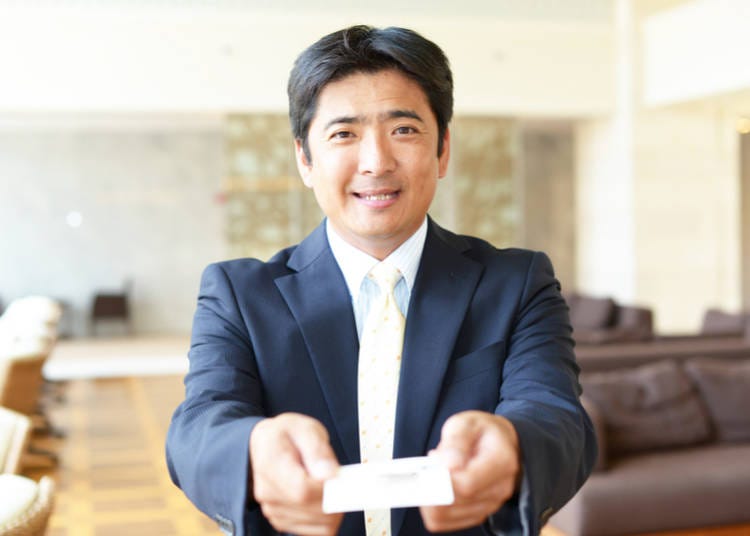
The way you present and introduce yourself to Japanese potential business associates plays an immensely important role for the outcome of any future potential relation. While it’s generally understood in Japan that people from other countries might be used to different standards, it always benefits to send a clear message from the get go.
The message essentially is “Not only am I interested in a mutually beneficial deal, but I’m also not assuming that my way is THE way”. Potential Japanese business partners will always take notice of a non-Japanese who has more experience with the country, culture, and mannerism than others.
Before you leave for Japan prepare business cards specifically for your trip. Meishi (or name cards) are widely used in Japan and they are exchanged at every meeting, with many people. Even for a 3-day business trip, you will probably want several dozen cards with you – and will likely want several hundred if you will be attending a trade show or other event. The design, and the information on the card provide the very first look into your attention to detail and care for your business.
When you order your cards, don’t assume that all the people you’ll meet can read or speak English fluently. Make sure that the card is both in English and Japanese (using the card’s two faces for this purpose is the most common method) and if possible, have someone with a professional understanding of the language proofread your card before sending to print.
Always keep your cards in perfectly mint condition without folds, scratches, dog ears and the likes. Do not keep your cards in your pants pocket (especially your back pocket). It does not look professional, in Japan, to hand someone something you fished from a pocket too close to certain areas of your body.
The standard size of a Japanese business card is usually 55mm x 91mm (sizes may change, but this is the most commonly used) – which is different than cards typically found in the West. When in Japan it will be very easy to find cases designed specifically for the safe and easy storage of your cards. You will be able to find many different kinds of cases at the airport, or in stores such as Loft and Tokyu Hands, and even in many convenience stores in a pinch.
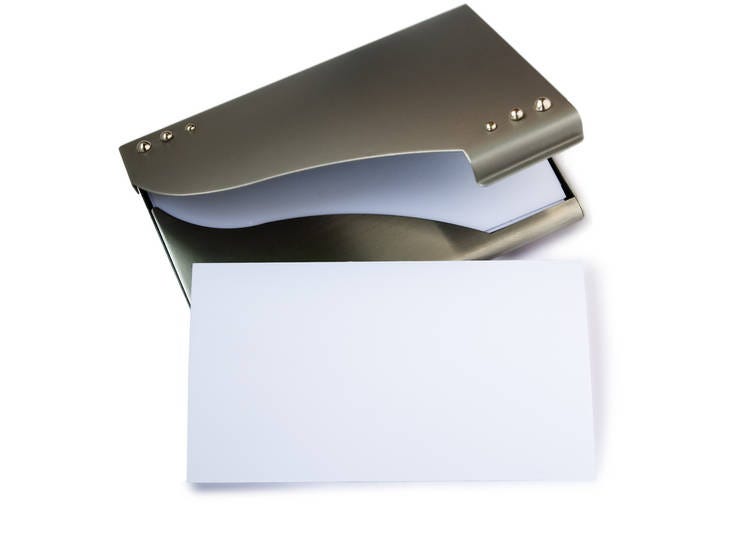
How to exchange business cards in Japan
In addition to the looks of the card, also how to hand them plays a role. You should present them holding them with both hands, with your information facing the person you’re giving the card to so it’s easily readable. Pinch the corners of your card between your thumbs and your index. Absolutely avoid handing cards with one hand, or holding it between your index and middle finger.
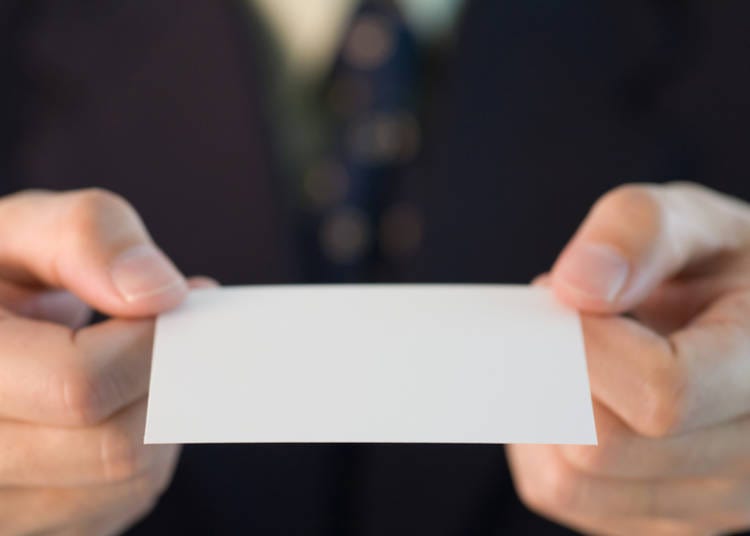
As you pass your card, chances are that the other person will do the same. Here a little game starts. Both parties will lower their card trying to place it underneath their counterpart’s. This action shows that you’re humbling yourself and you consider the other person being more important than you are. Eventually, of course, you will exchange cards. Hold yours with your left hand as you take the other card with your right hand, always pinching it between thumb and index finger.
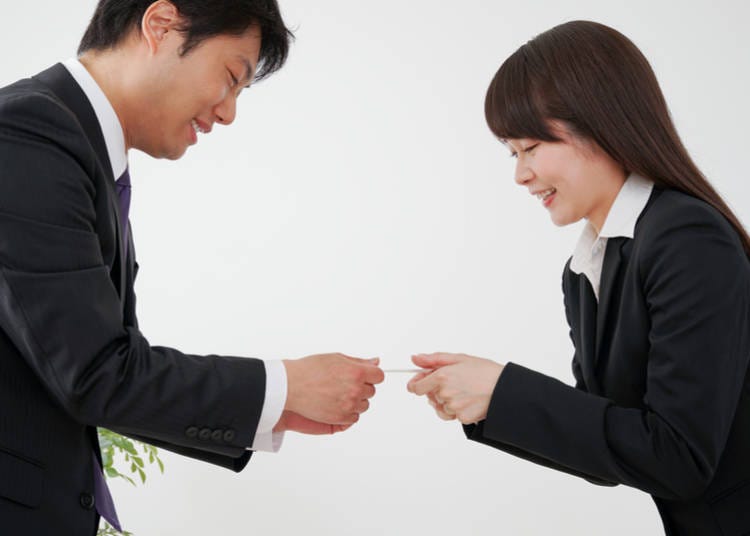
It’s polite to read the card once you collect it and to store it in a case or something similar. Avoid putting it in your wallet or in any place that might damage it, or that might give the idea that you don’t care about it. This is only one of the several ritualistic behaviors that are very common when meeting a person for the first time for business.
2. Practice introducing yourself in Japanese
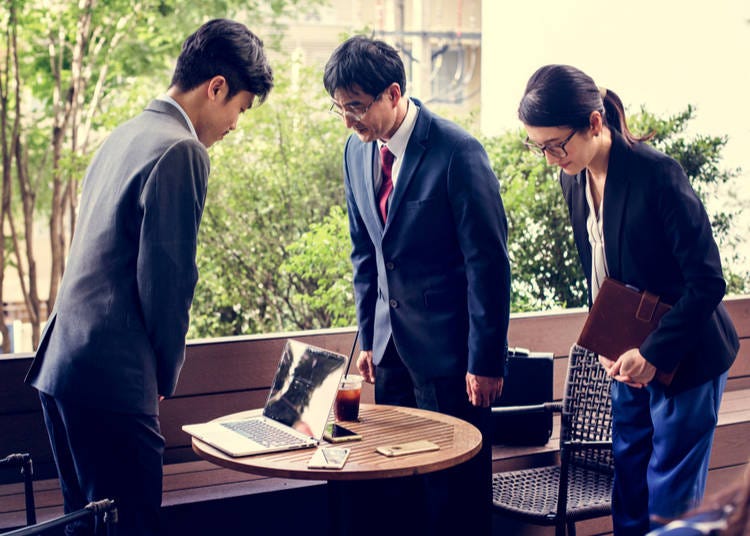
Before the cards exchange, you will introduce yourself. It’s ok to shake hands (avoid: a long shake; a shake with two hands, cupping the other person’s; squeezing too hard) – and this may be preferred by both sides.
You can also bow. When you do so, you should bow at a 45 degrees angle, as you state your name and position in the company. The other person will likely do the same. You should also avoid looking up or at the other person as you bow. Men should bow while keeping their arms along the sides of their torso, while women should join their hands in front of their lower belly.
Do not bow and shake hands at the same time.
When meeting someone for the first time, try to introduce yourself in Japanese, even if you can’t speak the language fluently. The simplest phrase to remember when introducing yourself is: “Haji-me-ma-shi-te. XX desu.” ― I’m XX. Nice to meet you.
Being able to use a few key phrases shows you’ve done your homework and already sets you apart from many of your competitors.
3. Pack Conservatively

Regardless of your field, in Japan it’s always more appropriate to dress in some form of business attire. Even in cases such as gaming companies, or in the music industry, where proper business attire is not strictly enforced, people will usually choose to wear dress shirts and blazers, or smart suit-jackets, especially for first meets.
Generally, though, men will wear a dark suit, plain white or blue shirt and necktie and polished black shoes.
Women prefer wearing conservative dresses or suit-dressed, usually dark, knee-length skirt, dark shoes with short heels.
4. Bring Sharp Slip-On Shoes (And new socks!)
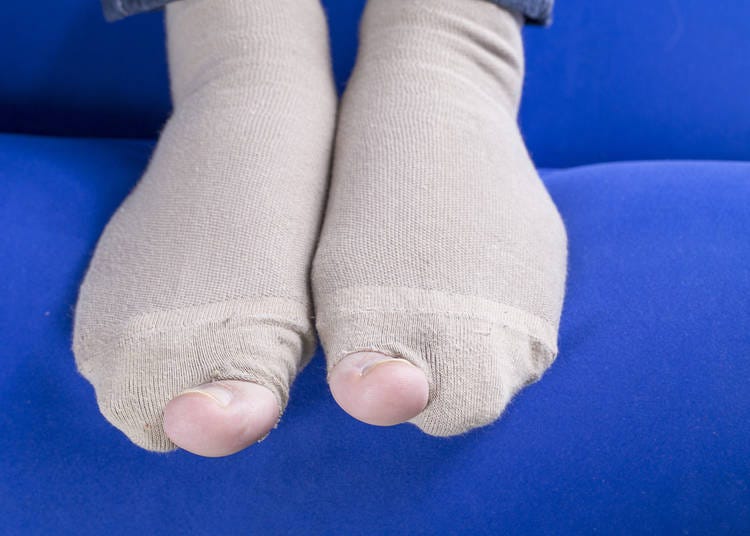
It’s important to remember that you may be invited to enter a room, or a locale in which shoes are not allowed – like a restaurant. Choose your footwear so that it’s elegant, but also easy to take off and put back on, should necessity arise. (Also make sure you have nice, new, sharp looking socks. You know those holes we hide within our shoes? Can’t really do that in Japan!)
5. Prep Your Collateral

Another important aspect of your presentation, is how you introduce your company itself. By and large, Japan is a paper-based culture. It’s always better to have hard copies of any document, presentation, or brochure you want to give to your potential business partners.
It also helps to invest some time and funds in a translation into Japanese. Even if the people you’re meeting are fluent in English, such a presentation shows attention to detail and consideration for your peers. Regardless, it’s always easier to sell an idea in the native language of those you want to consider it.
Keep in mind that Japanese companies love receiving what to you might seem as unimportant information. Make sure that your company brochure includes its foundation date, its capital and/or the number of employees (this speaks for the size, reach and potential of the company). Also make sure to include the names and contacts of the founder, partners (and their titles), as well as what products or services the company provides. Even the names of current clients are something that most Japanese companies would like to see, particularly if you are a startup. The people you’re meeting might already have all these information thanks to conversations you may have had prior to the first meeting, but having hard copies will still be beneficial.
In your brochure, make sure that you describe, as clearly and directly as possible what you’re looking for (OEM, technology investment, strategic partnership, capital investment, or anything else that you think you should include).
Finally ensure that your value position is highlighted, and clarify how your value prop fits your target and how they could benefit from a partnership.
6. On Time = 10 Minutes Early

In Japan, being on time equals being late. For this reason it’s important to always arrive a little early to any business meeting. Before leaving for your destination, make sure you know exactly where to go – especially if your meeting is in the morning, since you may have to confront rush hour packed trains. If you’re lucky enough to have a few extra hours, it wouldn’t be a bad idea to visit the meeting place the day before the actual appointment.
7. Prep for Taxi
Should you decide to take a taxi, make sure you have the address written in Japanese, as you might not be able to find an English-speaking driver.
8. Facebook is the new LinkedIn?
During your meeting, or right after it, people may ask you for a way to connect. LinkedIn is not very widely used in Japan, so people might ask you to connect via Facebook. Creating a custom Facebook list could help. Above all, be sure to change privacy settings on any personal content so as to avoid any potential embarrassment when you start receiving friend requests.
9. Who-San?
Most of us know that, when talking to each other, Japanese people use several kinds of suffixes. Which one(s) should you use? And should you call people by first name or last name?
Generally you’ll want to refer to others by their last name followed by san (i.e. Kimura san). Alternatively you could also use the suffix sama (although this conveys a very high level of respect that might not be necessary depending on the situation). Should someone ask you to call them by their first name, it’s ok to do so, but it’s recommended to follow with san (i.e. Akira san), unless explicitly asked otherwise.
10. Plan Roles Ahead – And Stick to the Plan

If you are part of a team and you will all participate to the business meeting, make sure that you define all the roles beforehand. Try avoiding getting into conversations or answers that might denote even slight disagreements or diverging points of view. It is not a bad thing per se, but, when dealing with people who might not be as fluent as you are in English it could cause confusion and doubts. Each person the team designates as a speaker should be the only one approaching certain subjects and should be able to be very clear and precise about their role (the whole idea of jack of all trades doesn’t really fly in Japan).
On that note, it’s very important to keep your language as professional, but also as clear and easy to understand as possible. Enunciation, lowered speed, and volume (but not too loud) are determining factors. Just as important though is your word choice. Certain expressions that are extremely common in English speaking countries are often unheard of elsewhere, so even a proficient English speaker, if they are not accustomed to a certain country, might not understand several slang words, or turns of phrases.
11. Timing your pitch is as important as the pitch itself

To make sure you don’t spend too much time trying to deliver your pitch, it could help to have a few words or concepts previously translated into Japanese. Also any kind of visual representation of your pitch will make a good impression, clarify things, and save precious minutes.
12. Got that timing? Now trim it down
Always account for the time that is needed for translations, interpretations, extra explanations, speaking more slowly than you’re accustomed to, and questions. If your meeting is supposed to last one hour, consider ahead how you can slim it down to half that in the event you find interpretation is taking it’s supposed to be half that. It’s always easier to add information to a planned pitch than it is to remove it from it.
13. Manage your expectations

What can you expect from your meetings in Japan? The short answer is “don’t expect too much”. In a general sense, Japanese companies look for long-term partners. In and on itself this kind of commitment requires some time to consider, regardless of the country.
This is even more true in Japan. Decision-making in Japanese companies, usually, is a relatively long process that requires a certain proposal to go through a lot of loops, and pass by a lot of hands before it’s given the “go ahead”. It’s extremely unlikely you’ll receive a “yes” or “no” answer at your first meeting. More often than not, people will approach the meeting literally from a prepared script. Even if you feel as though the meeting went extremely well, don’t jump the shark by reporting success to people back home: wait until the follow-ups to know where things truly stand.
This attitude should not be interpreted as a lack of willingness to accept a proposal, but simply as a stance that shows that you’ve been heard, and you will be considered in the appropriate setting. If you’re not fully satisfied with the answers (or lack thereof) you’re receiving, do not push for immediate clarification, but instead wait until your follow ups. And if you have a facilitator in between, after the meeting ask her or him for a read on the situation.
14. After the meeting – when business really begins
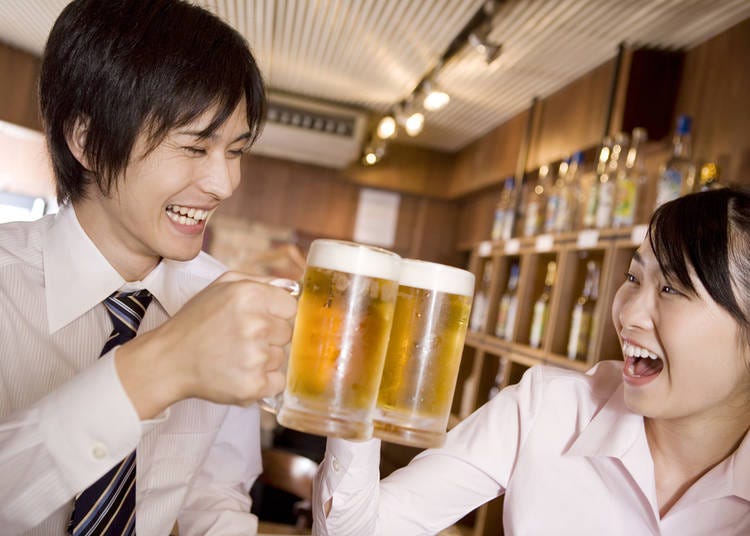
In Japan, when a meeting is over, the meeting continues. The vibe is completely different. Very often meetings move to restaurants or bars. Food and alcohol are used as a social lubricant in Japan. This is a way to connect to the person, as opposed to the business partner. You will not be judged much during these more goliardic components of the meetings, but it’s your chance to make yourself more likeable and it’s ok to get loose a little.
You will very often be expected to drink (likely a lot). It’s perfectly ok not to. To avoid embarrassing moments (such as rejecting someone who wants to pour you a cup of sake), it’s best to be upfront. The same goes for dietary restrictions or allergies you may have.
15. Practice up on your karaoke

At this point it’s all about having fun, but, sometimes, calculated fun. You want to make sure that you connect with people, so it’s important to work towards not alienating them.
After dinner and drinks, one of the favorite pastimes in Japan is Karaoke. You may be an awesome singer, or an awful one. No one will actually care or pay attention to it. It’s all about unwinding a little and bonding together. This does not prevent you from making some conscious choices that might make your party more comfortable. For example, many not-too-young Japanese people may not be all too familiar with the latest western hit songs, but they will most likely know (and get very excited to hear a native speaker sing) some oldies: Hey Jude, We will Rock You, Take me home, country road (they actually have a Japanese version of this song too), Happy, YMCA, and several others are almost sure successes.
Going back to that Facebook group you may have created before your meeting, make sure that if you take pictures of the event you ask beforehand if you can post them. It’s unlikely someone will have a problem with that, since going a little crazy with coworkers and business partners in Japan is not considered embarrassing but bonding. Still it’s best to ask, to avoid any potential resentment.
16. Follow up
Usually a few hours after the meeting, or the following morning, it’s a good time to contact the people you’ve met with a follow up message. This message can be fairly professional, but it’s recommended to make the time spent together the focus. Thank them for their time, for the fun, and for the attention they gave to your project. Point out you had a great time in the country and with the people you’ve met. This is a very common custom in Japan and, let’s face it, it’s nice to receive this kind of message.
17. Take a little time for yourself
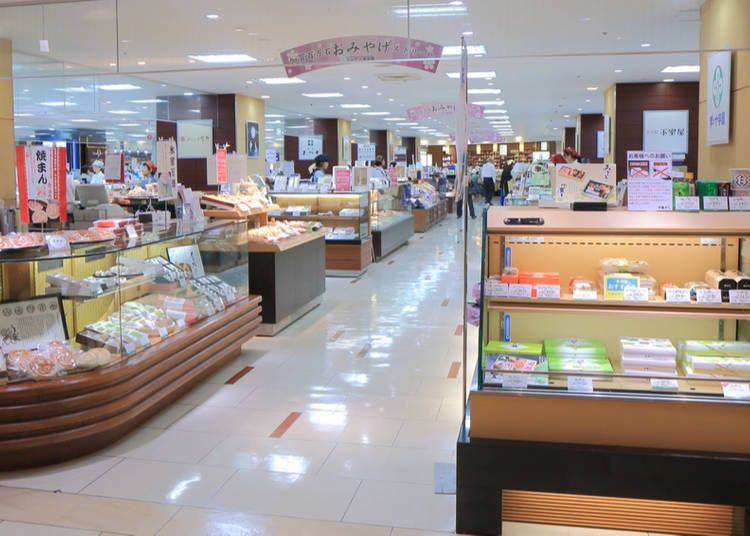
You’re all ready for your business trip and your business meetings, but don’t forget to make some time to relax and enjoy Japan. It will be well worth it.
While you’re at it, especially if you’re the kind of person that can’t unplug, even when taking a break, use your time to visit department stores, music stores, and any place that could be related to your business (or not).
You will be able to better soak in the level of passion, attention to detail, packaging and presentation that takes place in Japan. It will surely give you a better insight on the people, the country, and the business practices of the country.
Lucio Maurizi is an automotive expert specializing in Japan's car scene and auto-tourism. With an MA in East Asian History from La Sapienza Università di Roma, he's a multi-talented contributor to travel platforms like LIVE JAPAN, Japan Travel, and GPlus Media. His Instagram account (50k+ followers) offers insider views on Japan's automotive culture. Lucio also actively collaborates with professional drivers and influencers and organizes can't-miss car events in Tokyo.
*Prices and options mentioned are subject to change.
*Unless stated otherwise, all prices include tax.
Popular Tours & Activitiess
Recommended places for you
-

First Japan Cherry Blossom 2026 Forecast Announced! Here's When & Where to See Sakura in Japan
-
Ad

Preserving the Beauty of World Heritage Site Shirakawa-go for the Future Through Responsible Travel
-

Japan’s Shinkansen Is About to Change Travel in an Unexpected Way
by: Guest Contributor
-

How to Get Don Quijote's Exclusive 2025-2026 Winter Gift (+Tax-Free Savings)
-
Ad

(Opening in Jan 2026) 'THE SUMO LIVE RESTAURANT HIRAKUZA GINZA TOKYO!' 5 Exciting Ways to Experience the World of Sumo!
-
Ad

Discover the "Miraculous Forest" in the Heart of Tokyo: The Institute for Nature Study (9 Minutes from JR Meguro Station)
Inspiration for Accommodations
-

Enjoy Mt. Fuji from the Comfort of Your Room! Recommended Ryokan with Mt. Fuji View
-

Stay Near the Cherry Blossoms! Hotels for Cherry Blossom Viewing in Tokyo
-

Family-Friendly Hotels with Free Shuttle to Disneyland: Convenient Access for a Magical Stay
-

Top Ranked Hakone Hotels with Mt. Fuji View: Enjoy Stunning Scenery from Your Private Space
-

Convenient Tokyo Hotels with Airport Shuttle: Ideal for Families and Heavy Luggage
-

Stunning Tokyo Tower View Hotels: Enjoy Spectacular Scenery from Your Private Space
-

Convenient Asakusa Hotels with Kitchens: Ideal for Extended Family Visits
-

Experience Luxury: Hakone's 10 Best Five-Star Accommodations
-

Enjoy Mt. Fuji Autumn Leaves! Top Hotels Near the Popular Autumn Leaves Corridor
-

Experience Hakone Fall Foliage from Your Room with Stunning Views
-

Secrets to Shopping in Japan: Guide to Annual Sales in Japan & Where to Shop
by: Miyu Shimada
-

How Japan's Sushi Trains Are Coping with COVID: Sushiro's Latest Safety Measures and Services
by: Miyu Shimada
-

Autumn in Japan 2025: Fall Foliage Forecast & Where to Enjoy the Colorful Leaves (+Tour Info)
-
Ad

Fitness Shop Harajuku: One-Stop Shop for Japanese Health Supplements, Training Machines & More!
-
Ad

Explore Shinjuku: The Coolest Neighborhood Where Old Tokyo Meets Modern Tokyo!
-

Kichijoji – Explore Tokyo’s Top-Rated Stylish Suburb in Half a Day!
- #best ramen tokyo
- #what to buy in ameyoko
- #what to bring to japan
- #new years in tokyo
- #best izakaya shinjuku
- #things to do tokyo
- #japanese nail trends
- #what to do in odaiba
- #onsen tattoo friendly tokyo
- #daiso
- #best sushi ginza
- #japanese convenience store snacks
- #best yakiniku shibuya
- #japanese fashion culture
- #best japanese soft drinks




















